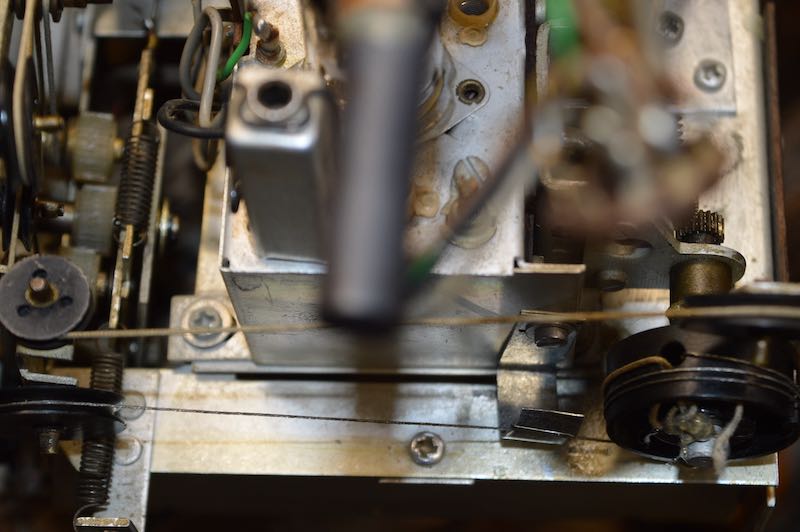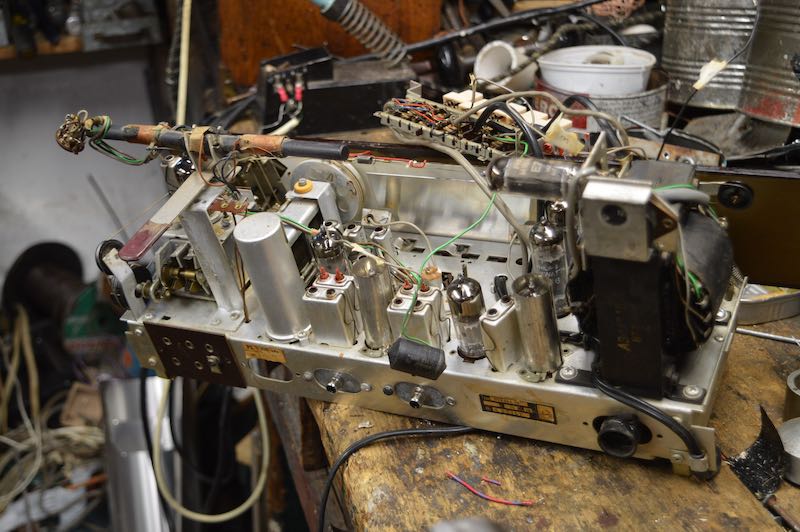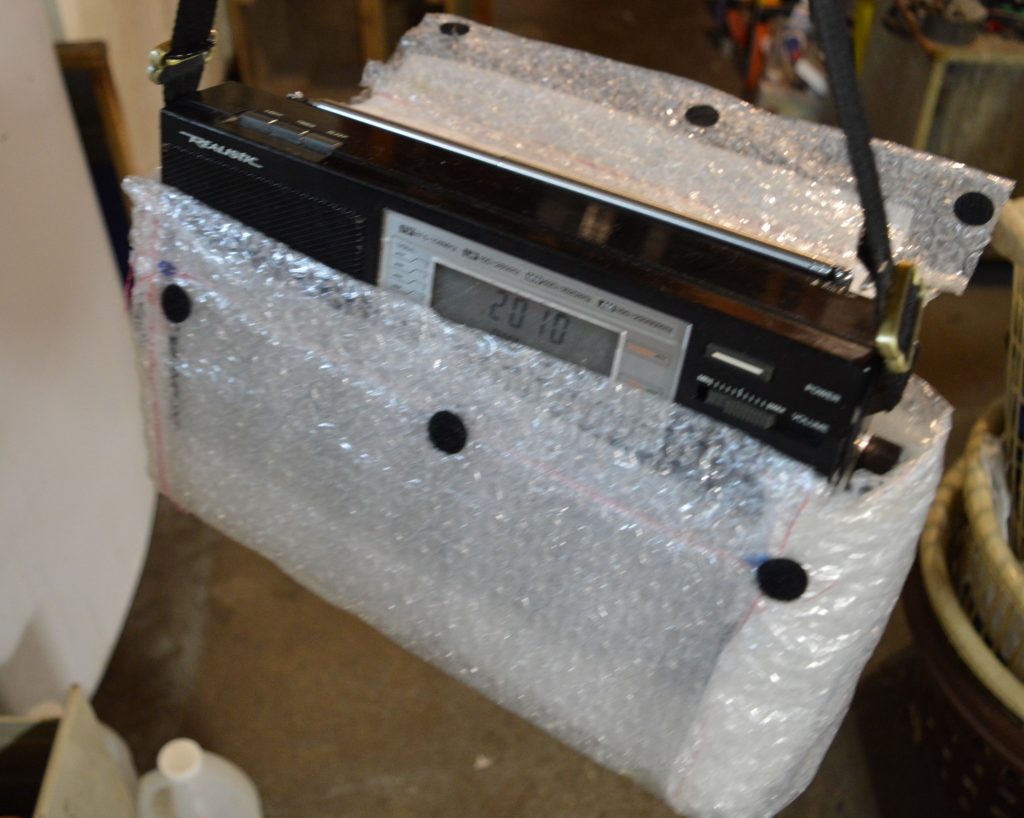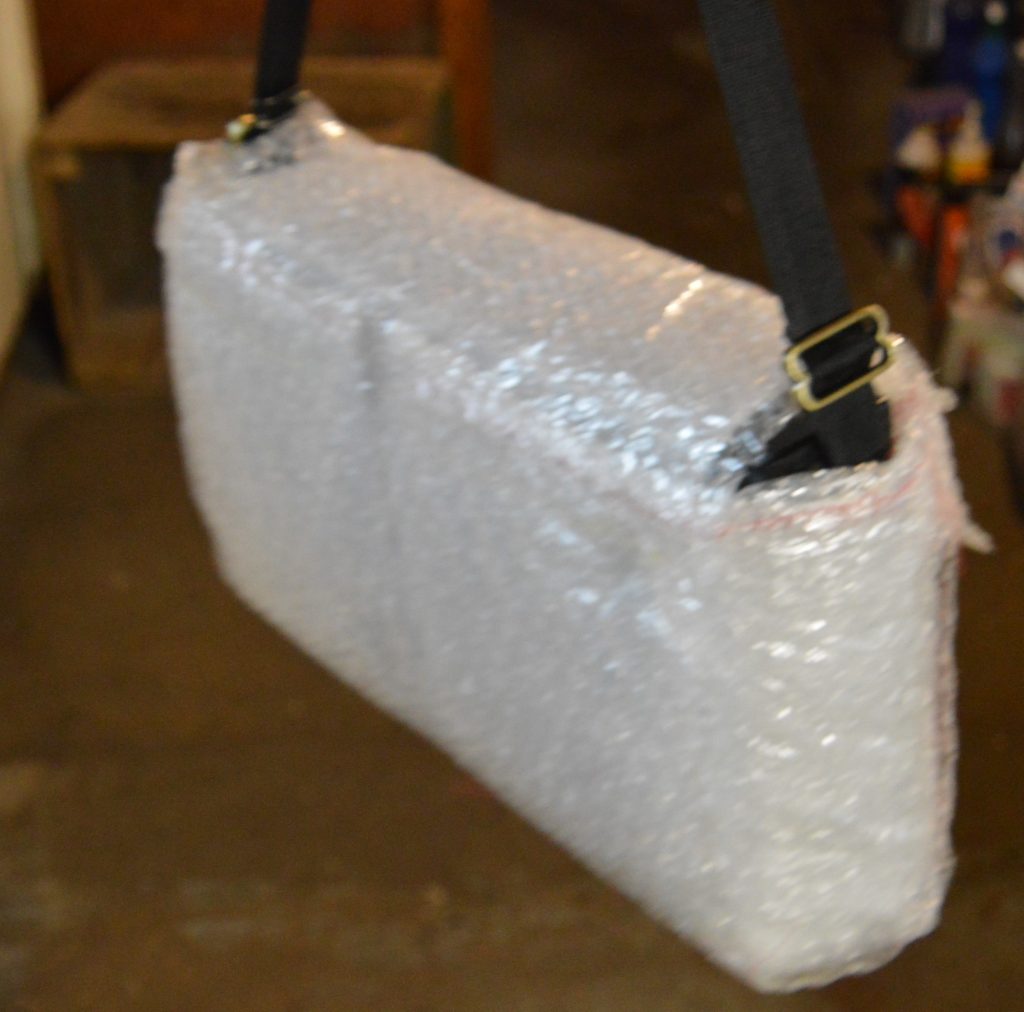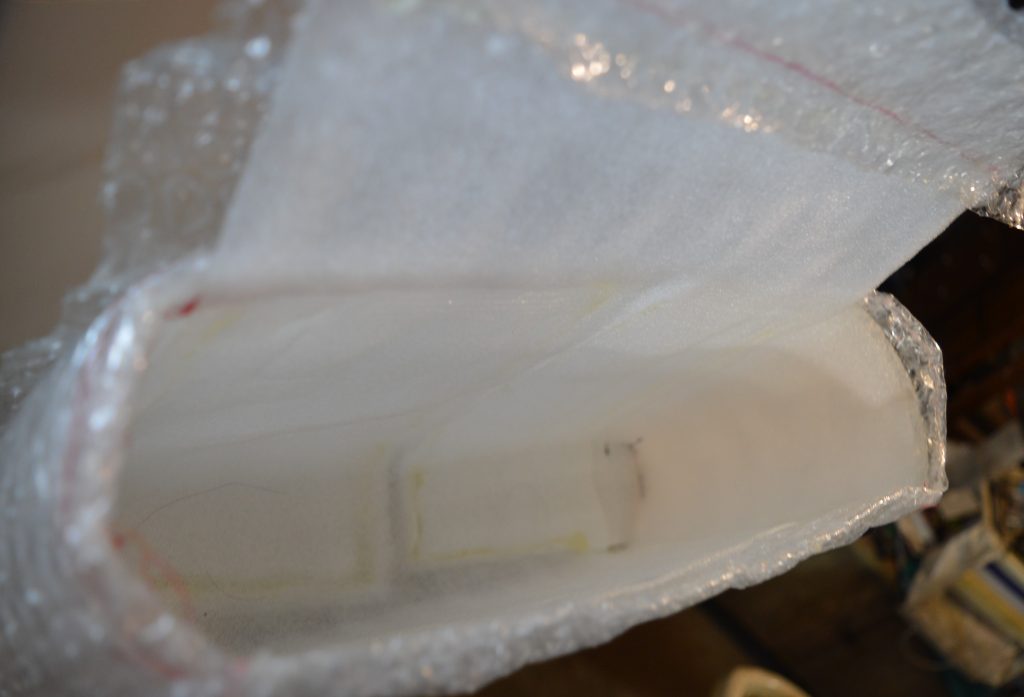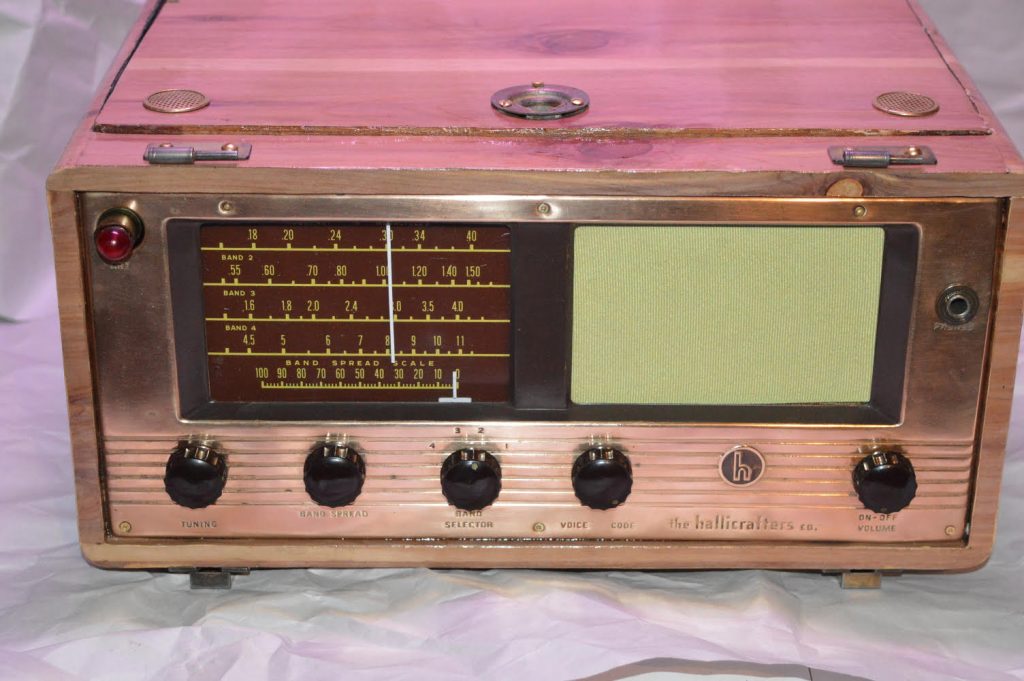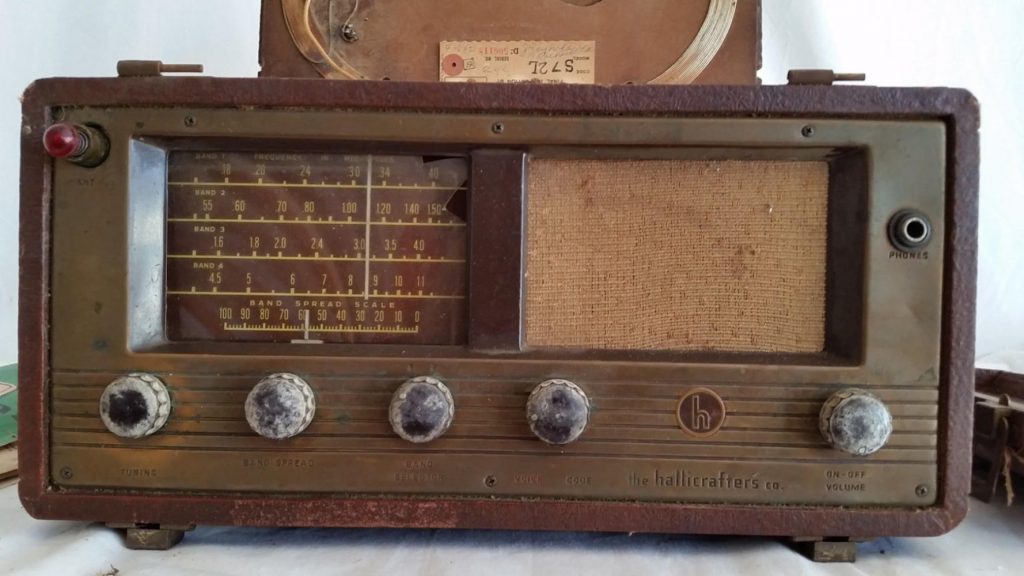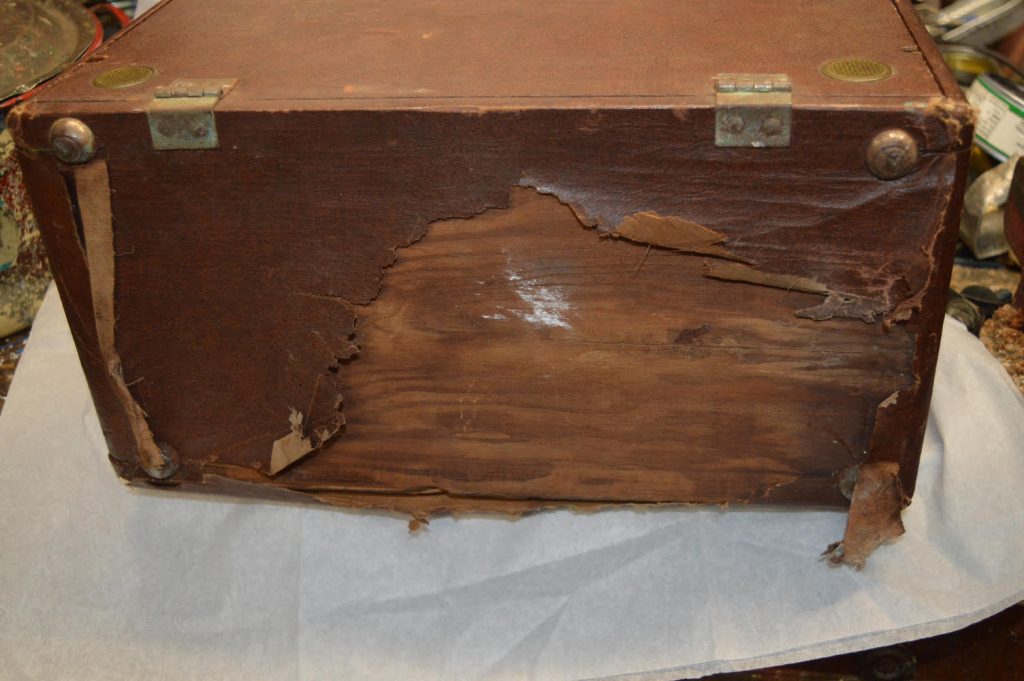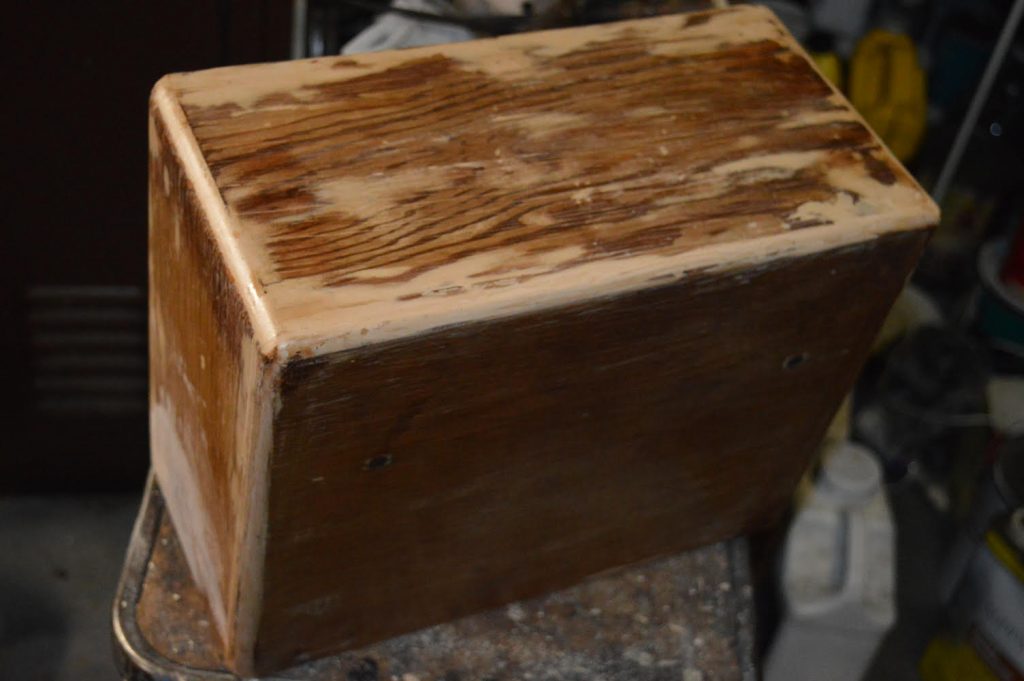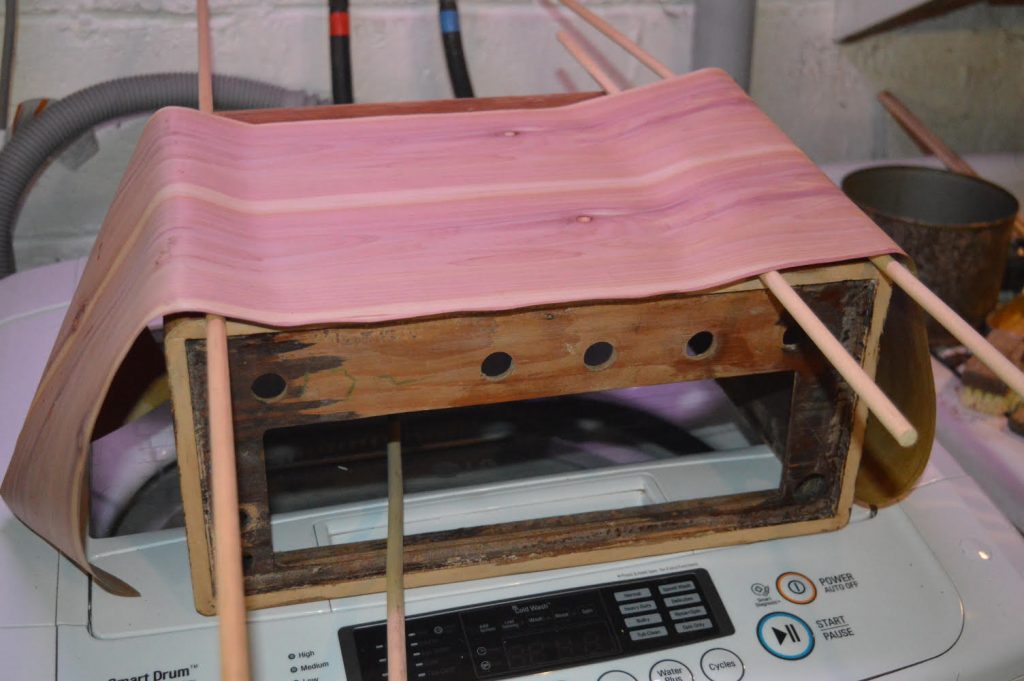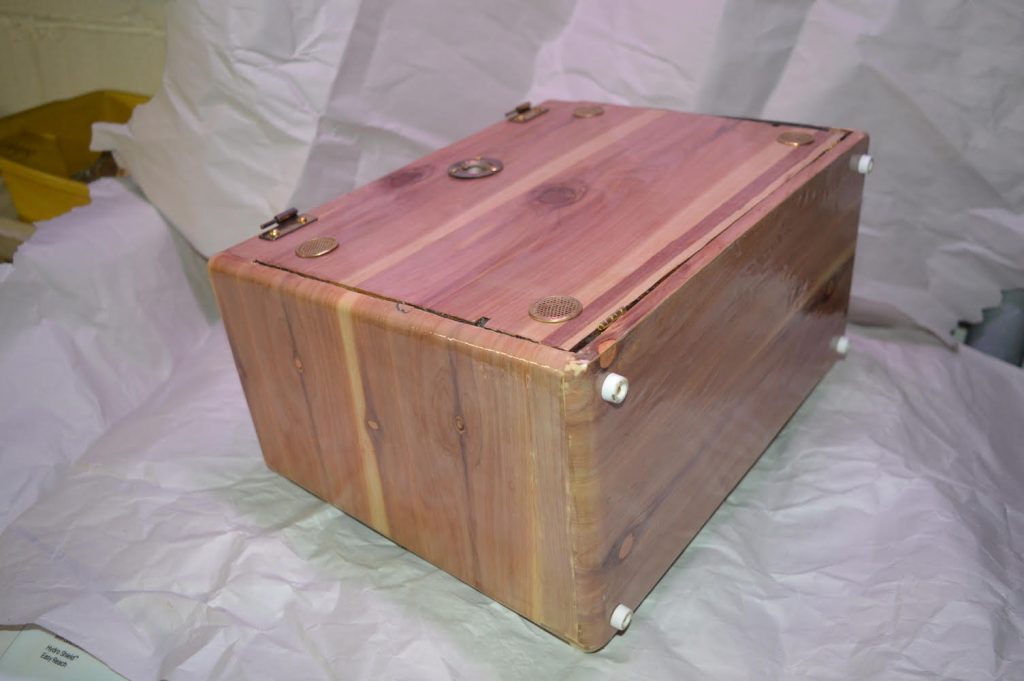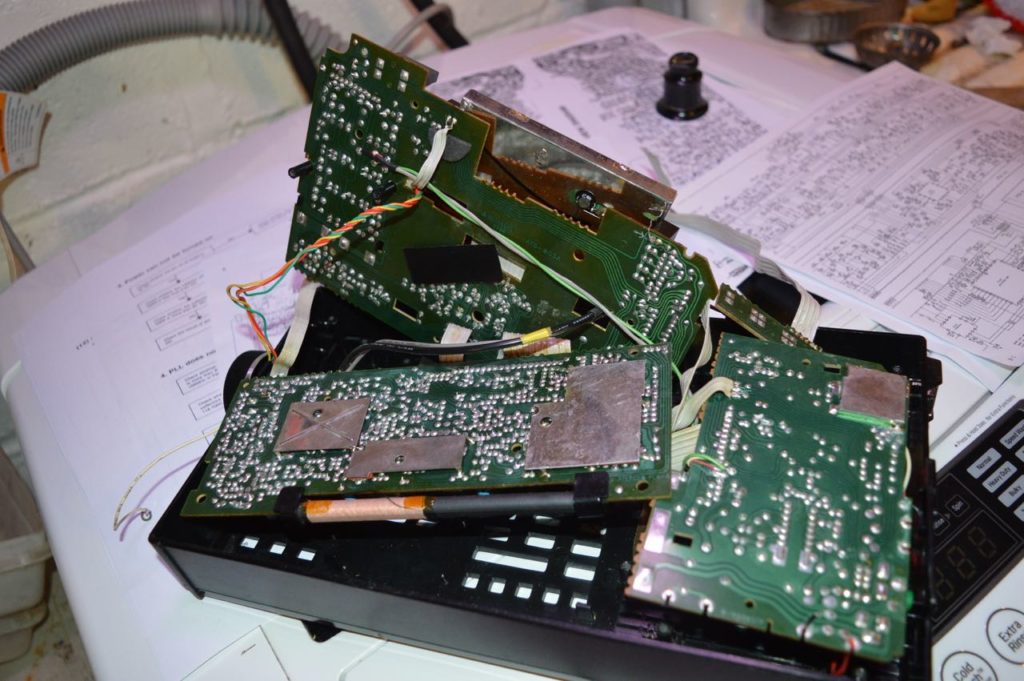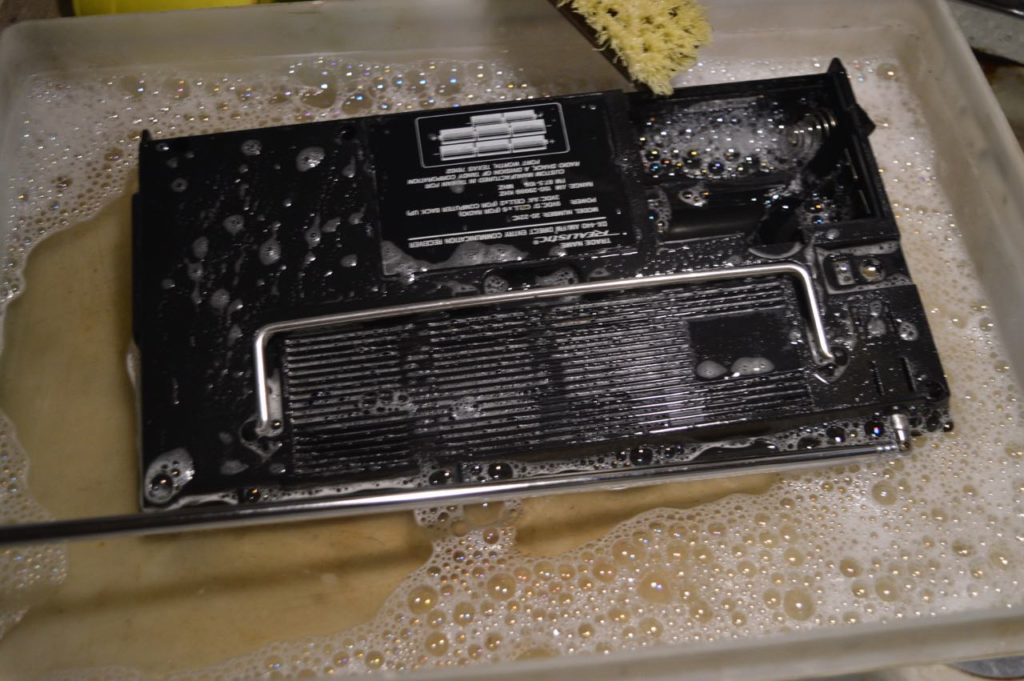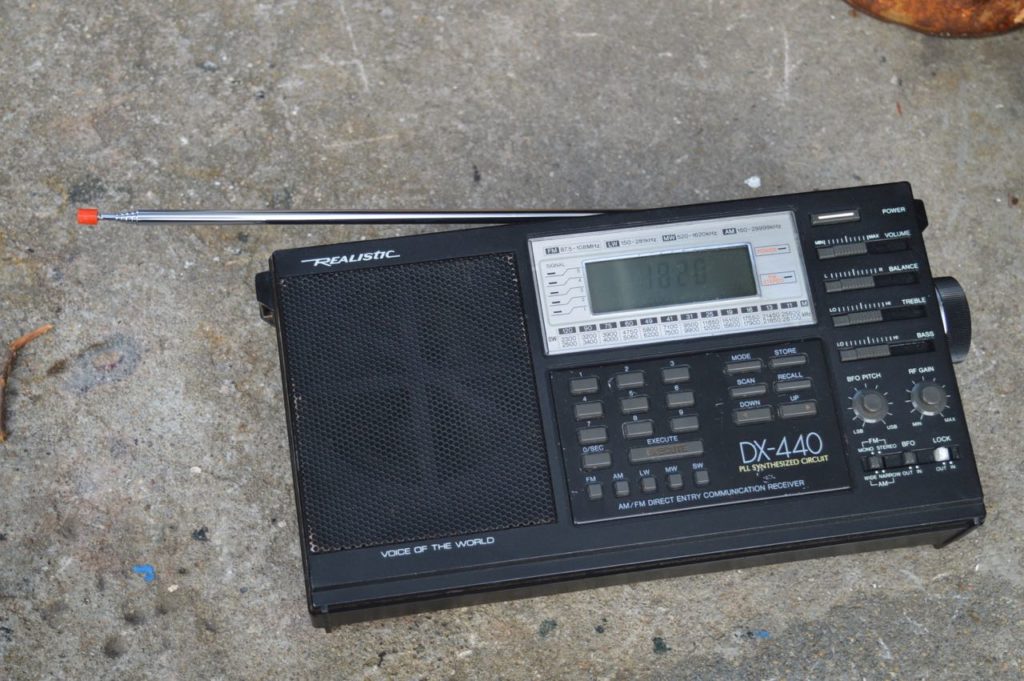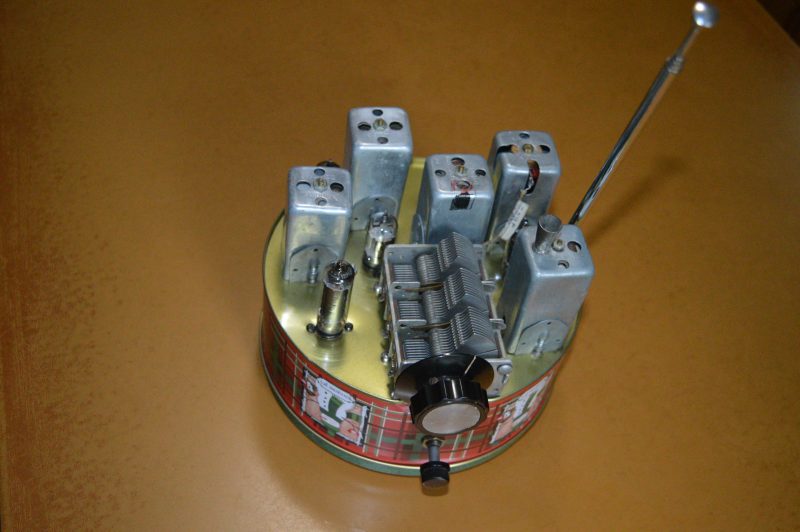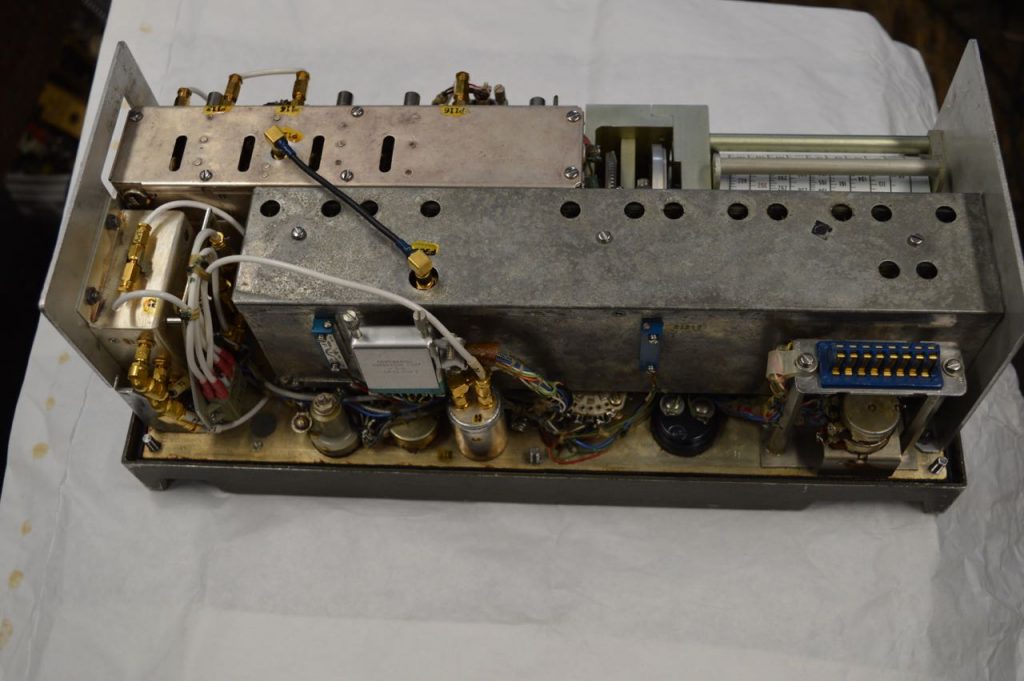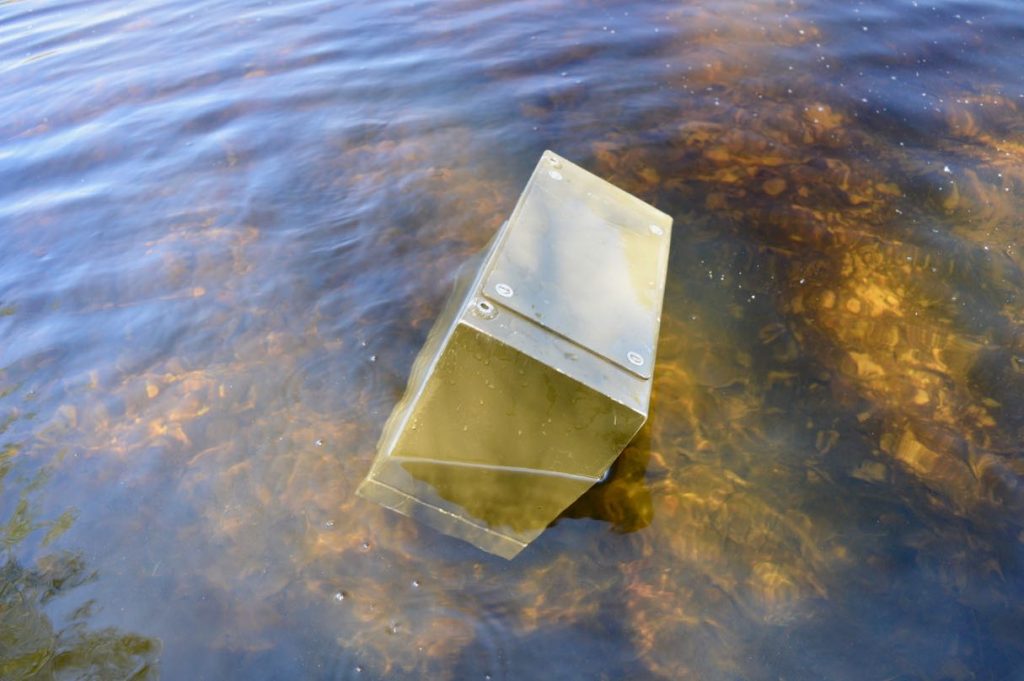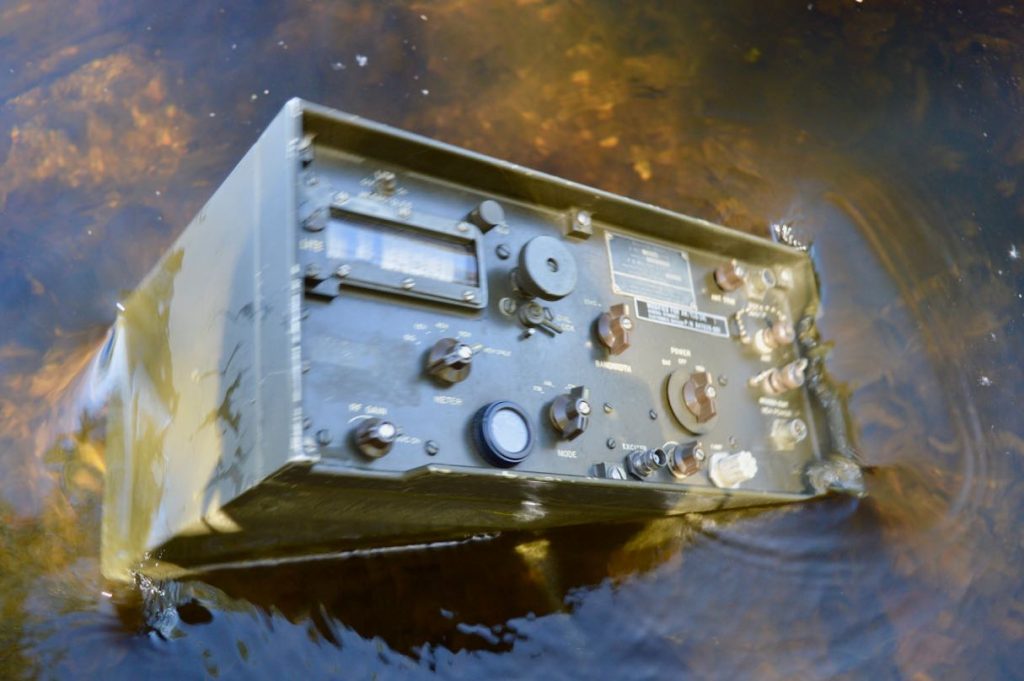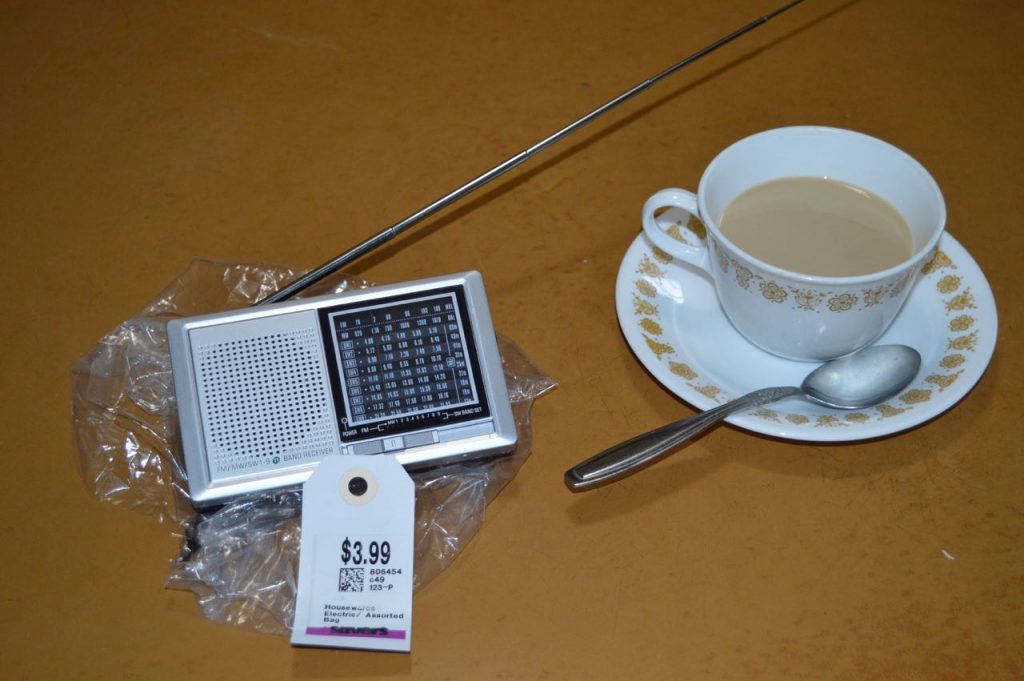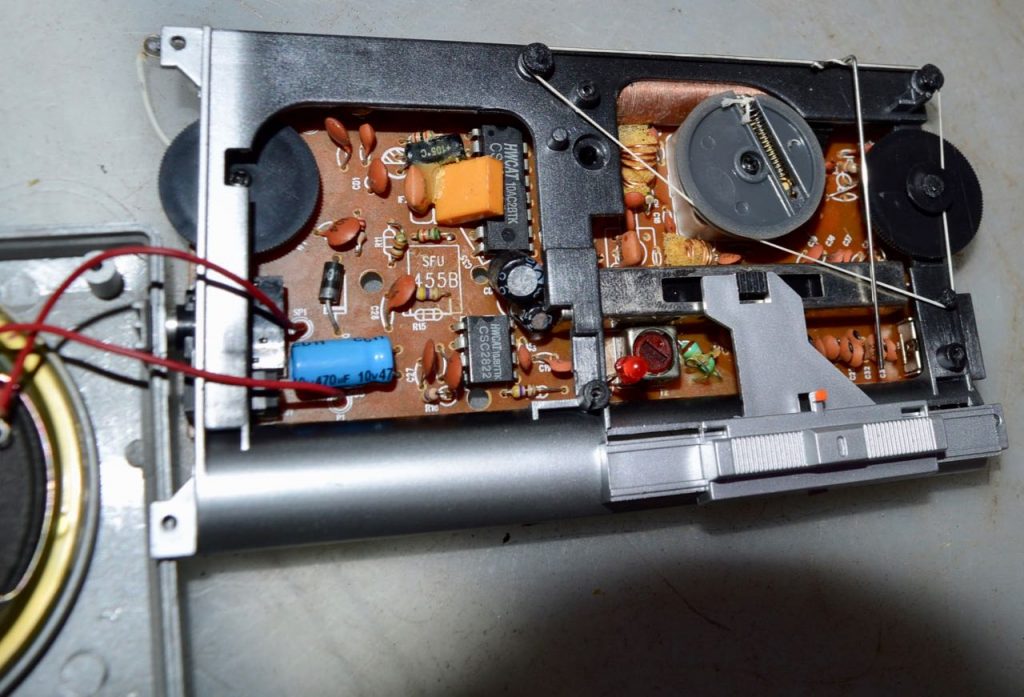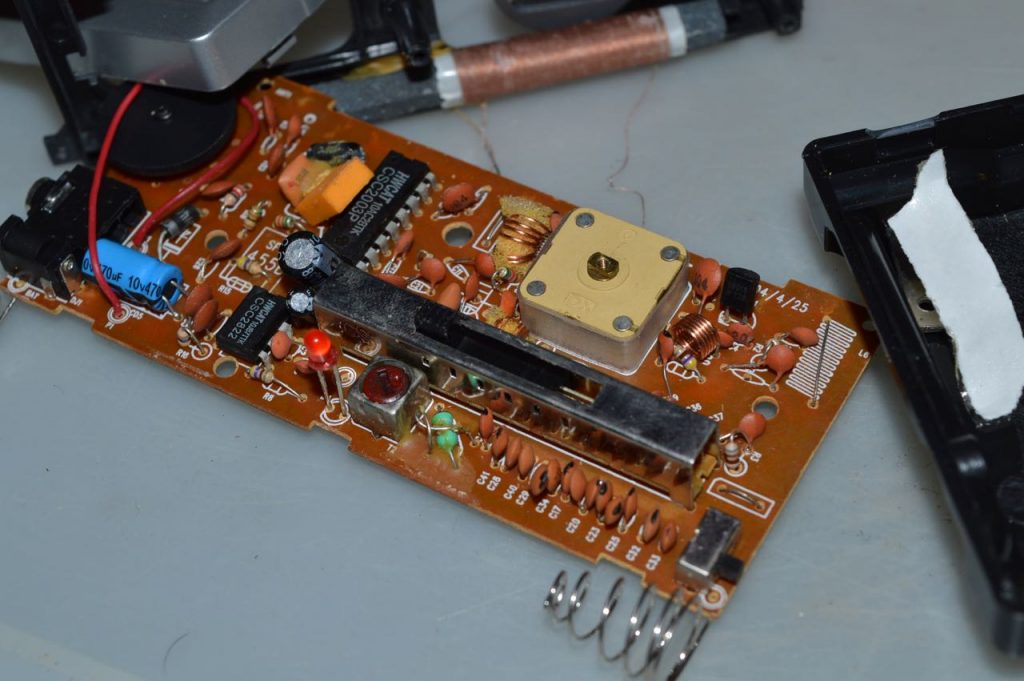Many thanks to SWLing Post contributor, Edward Ganshirt, who shares the following guest post:
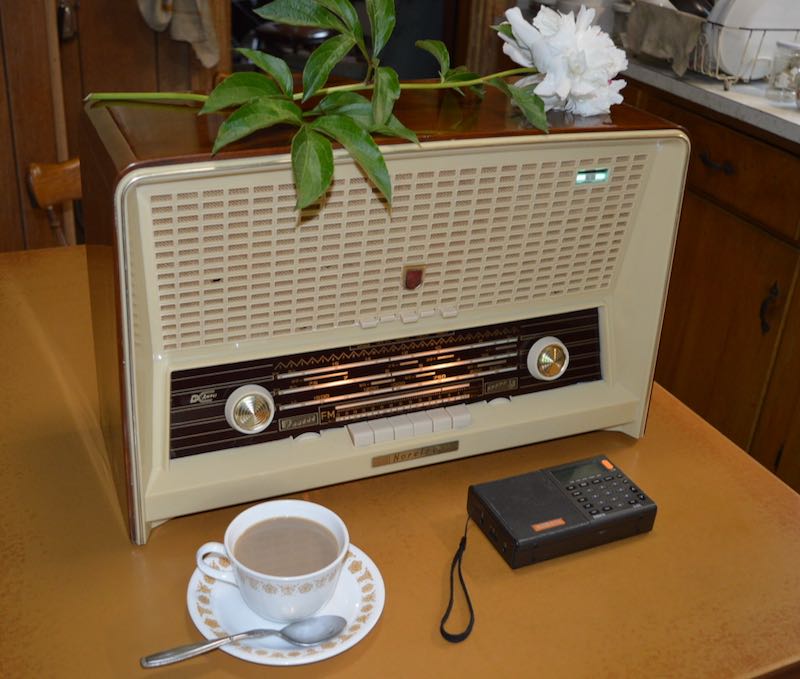 Pamela’s radio
Pamela’s radio
A neighbor gave me this radio. It had a story.
It is a Norelco B5X-88A/03 Table radio AM FM SW1 SW2. (You can see it takes up the whole kitchen table…that is why it is called a table radio). Has very good sound.
The speakers are 600 ohms, not 8 ohms, and uses bypass capacitors instead of an audio transformer.
Now about the carnation: I think my neighbor had thoughts that I may be giving it a Funeral and interring it in the backyard. (It has a nice finish you usually see on caskets)
Her Father was a Doctor who had his practice in the house and had this radio always playing low volume in the waiting room. He served in WW2 and brought this back in the late 1940’e. She inherited it and had it serviced a few times by a local repairman who since passed. Taking it apart I noticed several mechanical problems after removing an abandoned yellow jacket’’ nest.
The FM dial string was wound wrong so 88 MHz is where 108 MHz should be and vice versa. I restrung the dial properly but when tuned the string flopped off the pulley, so I fabricated a string restrainer to prevent this.
Also the station selector was scratchy and intermittent. To solve this, I played the garden hose with a forceful stream of water on the switches then dried out the chassis in the hot summer sun. Sprayed volume control restorer on all the switch contacts. After that, it worked perfectly. The remaining issue was the walnut veneer I sanded with 400 grit paper then coated with clear Krylon .
Now what to do with it!
Well I used her same sweet talk charm she used on me to take it off her hands to take it back, this time fully functional and I even demo-ed it. It had the wonderful mellow sound that she remembered and was so pleased.
What a true gentleman you are, Ed! Thank you for sharing the story of this Norelco table radio–what a gorgeous machine! I’m so pleased you were able to surprise Pamela with her father’s radio, fully restored!

